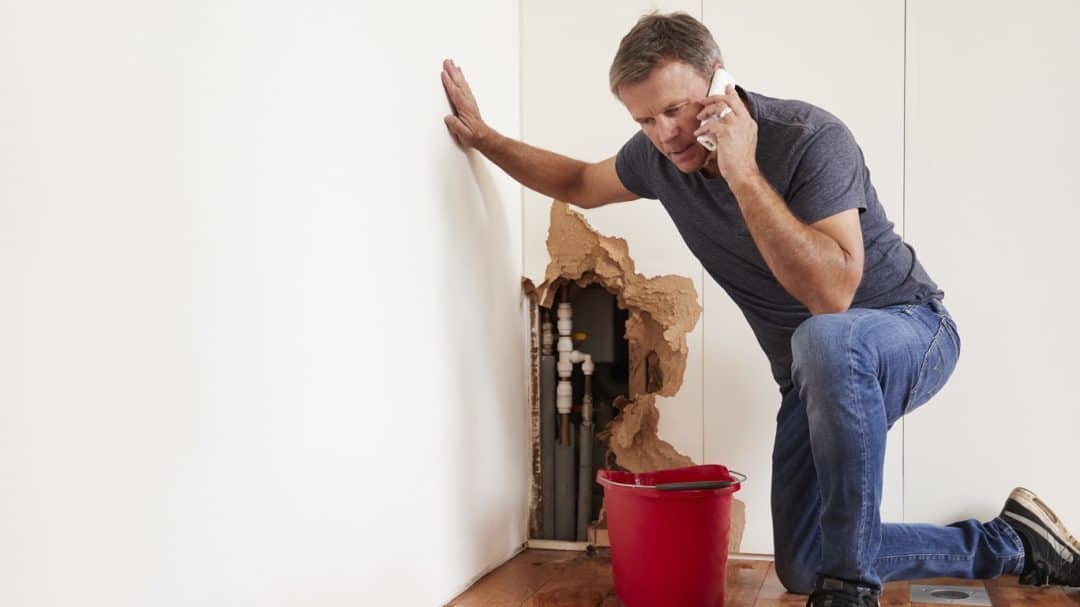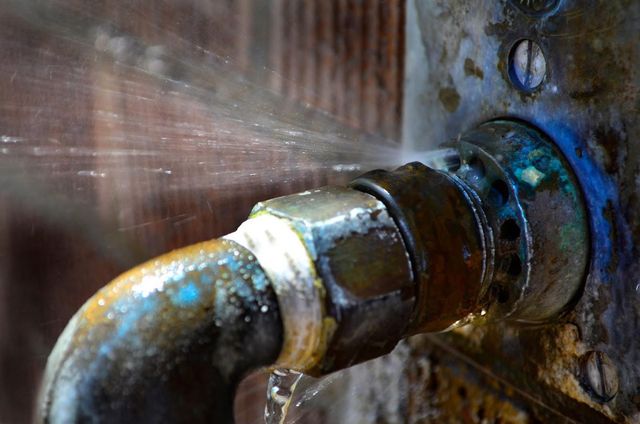Diagnose & Deal With Plumbing Noises
Diagnose & Deal With Plumbing Noises
Blog Article
Right here in the next paragraph you will discover some incredibly good insights with regards to Diagnose Unwanted Plumbing Noises.

To identify loud plumbing, it is very important to identify first whether the unwanted sounds occur on the system's inlet side-in other words, when water is transformed on-or on the drainpipe side. Sounds on the inlet side have actually differed reasons: extreme water stress, used shutoff as well as faucet parts, poorly linked pumps or other devices, improperly put pipe fasteners, and plumbing runs having a lot of tight bends or various other constraints. Noises on the drain side normally stem from inadequate place or, as with some inlet side noise, a layout having tight bends.
Hissing
Hissing noise that takes place when a faucet is opened a little normally signals excessive water stress. Consult your regional water company if you think this trouble; it will certainly be able to tell you the water stress in your location as well as can install a pressurereducing shutoff on the inbound supply of water pipe if required.
Thudding
Thudding noise, usually accompanied by trembling pipes, when a tap or home appliance valve is switched off is a condition called water hammer. The noise and also vibration are triggered by the reverberating wave of stress in the water, which all of a sudden has no place to go. Occasionally opening a shutoff that discharges water quickly right into a section of piping having a limitation, arm joint, or tee fitting can generate the exact same condition.
Water hammer can normally be cured by mounting fittings called air chambers or shock absorbers in the plumbing to which the trouble valves or taps are linked. These tools allow the shock wave developed by the halted flow of water to dissipate airborne they include, which (unlike water) is compressible.
Older plumbing systems might have short upright sections of capped pipeline behind walls on tap competes the same objective; these can eventually loaded with water, decreasing or damaging their effectiveness. The treatment is to drain the water supply completely by turning off the major supply of water shutoff and also opening all taps. Then open the major supply valve as well as close the taps one at a time, beginning with the faucet nearest the valve and also ending with the one farthest away.
Chattering or Shrilling
Intense chattering or shrieking that takes place when a valve or faucet is activated, and that typically goes away when the fitting is opened completely, signals loosened or defective interior components. The solution is to replace the valve or tap with a brand-new one.
Pumps and home appliances such as cleaning machines and dishwashing machines can move electric motor noise to pipes if they are improperly linked. Connect such items to plumbing with plastic or rubber hoses-never rigid pipe-to isolate them.
Other Inlet Side Noises
Creaking, squeaking, damaging, breaking, and also tapping typically are caused by the expansion or contraction of pipes, typically copper ones supplying warm water. The noises happen as the pipelines slide versus loose fasteners or strike nearby residence framing. You can frequently pinpoint the area of the trouble if the pipelines are subjected; simply comply with the noise when the pipes are making noise. Probably you will certainly uncover a loose pipe wall mount or a location where pipelines exist so near flooring joists or various other mounting items that they clatter against them. Connecting foam pipeline insulation around the pipelines at the point of get in touch with ought to fix the problem. Be sure bands and also wall mounts are safe as well as give appropriate assistance. Where possible, pipe fasteners need to be affixed to large structural elements such as structure wall surfaces rather than to mounting; doing so minimizes the transmission of vibrations from plumbing to surfaces that can amplify and also move them. If connecting fasteners to framework is inescapable, wrap pipes with insulation or other resilient product where they call fasteners, and sandwich the ends of brand-new bolts in between rubber washers when installing them.
Correcting plumbing runs that deal with flow-restricting tight or numerous bends is a last resort that needs to be embarked on only after consulting a proficient plumbing professional. Unfortunately, this scenario is relatively common in older residences that might not have been constructed with indoor plumbing or that have actually seen several remodels, especially by beginners.
Drain Noise
On the drainpipe side of plumbing, the principal goals are to remove surfaces that can be struck by falling or hurrying water as well as to insulate pipelines to consist of unavoidable audios.
In brand-new construction, bath tubs, shower stalls, bathrooms, as well as wallmounted sinks and containers must be set on or against resistant underlayments to decrease the transmission of sound via them. Water-saving toilets and also taps are less loud than standard models; mount them rather than older kinds even if codes in your area still allow using older fixtures.
Drains that do not run vertically to the cellar or that branch right into horizontal pipeline runs supported at flooring joists or other framing existing particularly bothersome sound problems. Such pipelines are large enough to emit substantial vibration; they likewise lug significant amounts of water, that makes the situation worse. In brand-new building and construction, specify cast-iron dirt pipelines (the huge pipelines that drain bathrooms) if you can afford them. Their enormity contains a lot of the sound made by water going through them. Additionally, avoid transmitting drainpipes in walls shown rooms and spaces where individuals gather. Wall surfaces containing drainpipes need to be soundproofed as was described earlier, making use of dual panels of sound-insulating fiberboard as well as wallboard. Pipelines themselves can be wrapped with special fiberglass insulation produced the function; such pipelines have a resistant vinyl skin (often consisting of lead). Results are not constantly acceptable.
WHY IS MY PLUMBING MAKING SO MUCH NOISE?
This noise indeed sounds like someone is banging a hammer against your pipes! It happens when a faucet is opened, allowed to run for a bit, then quickly shut — causing the rushing water to slam against the shut-off valve.
To remedy this, you’ll need to check and refill your air chamber. Air chambers are filled with — you guessed it — air and help absorb the shock of moving water (that comes to a sudden stop). Over time, these chambers can fill with water, making them less effective.
You’ll want to turn off your home’s water supply, then open ALL faucets (from the bathroom sink to outdoor hose bib) to drain your pipes. Then, turn the water back on and hopefully the noise stops! If you’re still hearing the sound, give us a call to examine further.
Whistles
Whistling sounds can be frustrating, as sometimes the source isn’t easily identified. However, if you can pinpoint which faucet or valve that may be the cause, you’ll likely encounter a worn gasket or washer — an easy fix if you replace the worn parts!Whistling sounds from elsewhere can mean a number of things — from high water pressure to mineral deposits. Your best plan of attack here is to give our plumbing experts a call. We’ll be able to determine where the noise is coming from and what the cause may be, then recommend an effective fix!
Cracks or Ticks
Cracking or ticking typically comes from hot water going through cold, copper pipes. This causes the copper to expand resulting in a cracking or ticking sound. Once the pipes stop expanding, the noise should stop as well.
Pro tip: you may want to lower the temperature of your water heater to see if that helps lessen the sound, or wrapping the pipe in insulation can also help muffle the noise.
Bangs
Bangs typically come from water pressure that’s too high. To test for high water pressure, get a pressure gauge and attach it to your faucet. Water pressure should be no higher than 80 psi (pounds per square inch) and also no lower than 40 psi. If you find a number greater than 80 psi, then you’ve found your problem!
Next step is to give us a call in order to install a pressure regulator. Trust us, you don’t want to wait to resolve this issue. Not only is the sound annoying, but high water pressure can be destructive to your home — including damaging certain appliances, like your washer and dishwasher.
Dripping
You might be accustom to the slow quiet drip your kitchen faucet makes. You might have even tuned out your bathroom sink dripping and drabbing all day long — but it’s time to find its cause.
A slow drip could signify a variety of easy to fix issues, such as a worn out O ring, or loose part. And by ignoring the drip, you could be wasting up to 2,000 gallons of water a year! So start conserving water — get it looked at ASAP.
https://www.pwessig.com/blog/2018/december/why-is-my-plumbing-making-so-much-noise-/

We were made aware of that article on Why Do My Pipes Make Noises through a good friend on another web address. Sharing is good. Helping people is fun. Thanks a lot for taking the time to read it.
Here Report this page